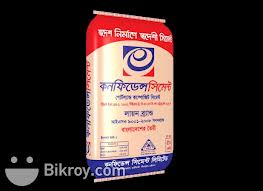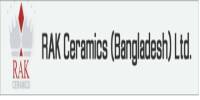Origin of the Report
This report, Valuation and Analysis: Confidence Cement Limited, has been prepared as a partial requirement to complete the Portfolio Management (F 407) course under Mr. Mohiuddin Ahmed.
Objectives
- Evaluate the macroeconomic environment of Bangladesh
- Provide an overview of the cement industry of Bangladesh
- Forecast the performance of Confidence Cement Limited
- Recommend an investment decision for Confidence Cement Limited
Scope
The report considers recent economic and industry information for the macroeconomic and industry analysis. Atop-down approach has been used. Company data from 2003 to 2008 has been used and share market information was used from the Dhaka Stock Exchange (DSE) only.
Methodology
The report has been based mainly on secondary data. Sources of the secondary data used include:
- Company Annual Report – DSE Library
- Newspaper Articles
- World bank, ADB, IMF, CIA, etc reports
- Bangladesh Bureau of Statistics (BBS) and Bangladesh Bank websites
Limitations
The main limitation of the report:
- There has been inconsistency among the data sources
- A number of subjective decisions have been made
- Recent information regarding the industry and the company was unavailable. This was particularly distressing as recent data about the effects of economic recession were not available
- In addition, only the unaudited half yearly report of 2008 was available thus making projections even more subject to inaccuracy
Macro-economic Analysis
As of present Bangladesh is the 31th largest economy in the world in terms of purchasing power parity. However since its inception Bangladesh has faced problems associated with natural calamities, political instability and more recently global economic shocks. Bangladesh faces many challenges. Poverty and corruption are among the chief problematic phenomena for the country. However, Bangladesh also is a land with many opportunities. Bangladesh is gifted with diverse natural resources with coal and gas being the main natural reserves.
Although improving, infrastructure to support transportation, communications, and power supply is poorly developed. Solving the energy and infrastructure problems will bolster the economy and will open up new avenues for foreign investment.
GDP Growth
The GDP of the fiscal year of 2008 has been slightly lower than that of the previous year. It dropped from 6.4 percent to 6.2 percent. This was due to weaker growth in agriculture which resulted from natural calamities and increasing raw material costs. However, at the same time favorable growth in the service sector was witnessed at growth rates of 6.9 percent. Bangladesh’s GDP growth is mainly fuelled by remittance based consumption; hence a fall in remittance will have an impact of the country’s GDP growth. The following summarize the projected GDP growths of the coming years:
| GDP Forecasts | 2008-09 | 2009-10 | 2010-11 | 2011-12 | 2012-13 |
| Asian Development Bank (ADB) | 5.6% | 5.2% | – | – | – |
| Economist Intelligence Unit (EIU) | 5.5% | 3.9% | 4.2% | 4.9% | 5.2% |
| Bangladesh Bank | 5.88% | – | – | – | – |
Table 1: Projected GDP growth of Bangladesh
While the global financial meltdown will definitely slow down growth, it is forecasted that agricultural output will increase due to a good expected harvest in the coming aus and aman seasons. Industrial output is expected to slow down due to falling demand both at home and abroad. Consequently, the service sector will also suffer from stagnant exports.
Inflation
Bangladesh has experienced some of the highest rates old inflation in its history for the past few years. Average inflation shot up from 7.2 percent to 9.9 percent in 2008. A major component of this inflation spike has been food inflation which was severely affected by international commodity prices. In addition to natural disasters, high public spending, rapid credit growth, and stronger demand boosted by remittances also contributed to inflation pressures. However, in the past few months, inflation rates have been controlled down to more acceptable levels. This coincided with the entry of the new elected government. However, a major reason for lowered inflation has been falling international prices in fuel and so on. This coupled with proactive government policies may help push down inflation. Forecasted inflation rates are as follows:
| Inflation Forecasts | 2008-09 | 2009-10 | 2010-11 | 2011-12 | 2012-13 |
| Asian Development Bank (ADB) | 7.0% | 6.5% | – | – | – |
| Economist Intelligence Unit (EIU) | 5.4% | 6.3% | 4.8% | 4.5% | 4.0% |
Table 2: Project Inflation Rates
Money Supply
In order to maintain growth, the Bangladesh Bank improved monetary expansion and private sector credit growth. However, such policies may increase inflationary tendencies. The year-on-year expansion in money supply (M2) rose from 14.7% in December 2007 to 17.6% in June 2008. Private sector credit growth accelerated from 16.8% to 24.9% in the same period.
Exchange Rate
The Bangladeshi Taka (BDT) has been stable over the past few years as seen by the table below:
| Exchange Rate | 2005-06 | 2006-07 | 2007-08 |
| Taka per US $ | 68.933 | 68.875 | 68.602 |
Table 3: Trend of BDT against USD (Source: ADB)
Between August, 2007 and 2008, BDT appreciated slightly by 0.26 per cent. However, by the end of August 2008, BDT per USD decreased to Tk.68.52 from Tk.68.70 at the end of August, 2007. However, in recent months, the exchange rate is expected to slightly depreciate, which may have been done in order to boost exports. Moreover, there has been an increase in foreign currency in stock due to falling demands for opening import L/Cs.
| Exchange Rate Forecasts | 2008-09 | 2009-10 | 2010-11 | 2011-12 | 2012-13 |
| Economist Intelligence Unit (EIU) | 69.50 | 69.95 | 71.72 | 74.17 | 77.50 |
Table 4: Forecasted Exchange rates (Source: ADB)
As suggested above, the BDT is expected to be further depreciated in the future.
Interest Rate
Interest rates (lending and deposit rates) have continued torise over the years, until the end of 2008 when it dipped slightly. The interest rates should continue to decrease since the Bangladesh Bank has placed numerous caps on lendingrates in order to revitalize business growth.
Capital Market
Despite strong growth in 2007, the capital market has been showing a falling trend the past year or so. The volatile nature of the Bangladeshi stock market has been greatly affected by political instability, inactive institutional participation and changeable sentiments. However, participation of foreign investors in the Bangladeshi market is limited. As a result, our stock market is isolated from the recent global economic trends. Instead, fall in index derives from lack of confidence in investors.
Political Situation
The scheduled general election at the end of 2008 has impacted the economy in 2008. Recent reform initiatives including the reduction of lag time in the ports dramatically, customs and labor standards are positive for Bangladesh. Such policies have a positive implication on the cement industry since allows smoother flow of resources.
Remittance
The first half of 2008 sustained the growth as observed in the previous year. In fact, Remittance receipts increased in 2009, contrary to popular beliefs. However, it is expected that levels of remittance will fall as the true effects of remittance hits Bangladesh. The current account balances are rise again in 2011-2012, when the global economy will be in a recovery stage.
Ancillary Services
The main ancillary industry of cement industry is real estate industry. The real estate industry and cement industry are strongly positively correlated as both the industries are now going through a slump. The construction sector is closely linked to demand of cement; therefore volatility in that sector will hit the cement industry hard. Demand for construction is related to levels of remittance; hence Confidence Cement Limited will also be affected. Also real estate sector is expected to further slow down as it is heavily dependent on remittance as a large proportion of real estate are developed for Non-resident Bangladeshis.
Effect of Macro-economic indicators: Cement Industry
(1) GDP Growth: The GDP growth is very important to the cement industry as it is an indicator of demand. The industry already suffers from excess supply and lower capacity utilization. Slight fall in demand for cement will have an adverse implication on the overall sector. A slowdown in growth will stunt infrastructure and construction development which could severely impact the profitability of cement companies.
(2) Inflation Rates: High rates of inflation equates to lower purchasing power. Hence a larger portion of consumption is targeted to basic necessities. As a result, there may be a lack of interest within households to buy a new home. A more direct effect on the cement industry is higher Cost of Goods Sold (COGS) resulting from higher raw material costs and wages.
(3) Exchange Rates: The exchange rate is important in two respects. Firstly, the core ingredient of cement – clinker – is mostly imported and thus heavily affected by changes in exchange rate. Take the year 2004 when changes in the clinker price were enough to lead to an industry wide slump. Second of all, export of cement is possible due to the price competitiveness and quality of locally produced cement. Higher exchange rate will make cement more expensive to foreign buyers and thus may destroy the market.
Industry Analysis
Cement Industry: History
Only two companies – the state owned Chhatak Cement Factory and Chittagong Cement Clinker Factory – manufactured cement. Due to grossly insufficient supply, most of the required cement had to be imported. Soon, adulterated cement flooded the market. This prompted a change during the 90s when several private local cement manufacturers came into existence. Later cement MNCs also started operations due to potential demand and cheap labor. So far, about 100 Factories got government’s approval of which 90 factories are on production. Cement companies began mushrooming during the construction sector boom. However as real-estate growth stagnated, so did the cement industry. Soon the industry had underutilized capacity forcing companies to shut down.
Cement Industry: Present Scenario
Recently, the international price of clinker has fallen, easing pressure on the cost of production. However, the lack of substantial demand is still a major concern. However, there has been an increase in cement exports to neighboring countries which should ease the taut domestic situation.
The cement industry of Bangladesh at a glance:
- Total Production Capacity: 21 million tons
- Total Consumption: 8 million tons (2007)
- Number of factories registered: 123
- Factories started operation: 70
- Factories currently in operation: 30-35
- Publicly listed companies: 8
Cement Industry Structure
The cement industry is a monopolistically competitive industry. However, it may become oligopolistic as competition increases and smaller manufacturers drop out. It is characterized by the following features:
- Many Sellers: There are 87 companies in Bangladesh today and 62 of them are registered with the BCMA. However, only around 35 companies are fully operative throughout whole year. The rest are seasonal manufacturers.
- Excess Capacity: Bangladesh at present has over capacity of meeting its own demand. The capacity utilization is of only 41.2%. This has led to exports in neighboring countries.
- Product Differentiation: A wide variety of cement formulations are manufactured according to raw materials and process used.
- OPC: Ordinary Portland Cement, 95% Clinker, 5% Gypsum
- PSC: Portland Slag Cement, 80~85% Clinker, 10~15% Slag, 5% Gypsum
- PFC: Portland Fly Ash Cement, 80~85% Clinker, 10~15% Slag, 5% Gypsum
- CEM I: 95% Clinker, 5% Gypsum
- CEM II: 80~85% Clinker, 5% Gypsum, 10~15% another cementitious addition
- CEM III: 60~70% Clinker, 5% Gypsum, 35~25% two other cementitious addition
- Product Differentiation: A wide variety of cement formulations are manufactured according to raw materials and process used.
- Barriers to Entry: Very high barriers to entry exist mainly due to high levels of competition, high initial capital investment, existing excess industrial capacity and high infrastructure requirements.
- Barriers to Exit: In addition to high entry barriers, there are also exit barriers due to the high sunk costs incurred during plant setup.
Demand and Supply Factors
- Real-Estate Industry Growth: As mentioned briefly in a previous section, the growth of the cement industry and the real-estate industry are positively correlated. Currently due the economic slowdown, the real estate industry is in a sluggish position. Hence, local demand for cement will slow down.
- Development of Infrastructure: Infrastructural undertakings, whether by the government or by the private sector, act as a growth proponent for the cement industry. Currently, infrastructural development is slowing down.
- Demand in International Markets: International demand for Bangladeshi cement is expected to rise. It is through exporting Bangladesh is trying to counter its excess capacity. Therefore, the performance of the cement industry largely depends on the export performance of the next few years, as local demand is not expected to significantly improve before 2012. Confidence Cement Limited already exports to neighboring countries such as Nepal.
- Supply of Raw Material: The supply of clinker, the sole raw material of cement, has a profound impact on the supply of cement. Currently, international price of clinker has fallen which should lower production costs.
Porter’s 5 Forces Model
Bargaining Power of Customer:
In the cement industry the product hardly varies from company to company so the customers have limited options. Also the there is no replacement material for cement so the power of customers is very limited in the cement.
Bargaining Power of Suppliers:
The two countries from whom the cement companies import raw materials are Thailand and Indonesia. Hence these countries can lever a significant power over cement companies like Confidence Cement Limited.
Threat of New Entrants:
There is a very low risk of new competitors entering into the market. It is already saturated and there are other high barriers to entry.
Threat of Substitutes:
There is hardly any threat of substitute since cement is basic construction material which really has no alternatives.
Competitive Rivalry:
The industry is dominated by a few established companies. Competition is cut-throat where there is an industry wide under utilization.
Industry Life Cycle
The cement industry is in the matured stage – the market is over saturated and there is excess capacity. Hence the only way cement companies can survive is to export.
Business Cycle
The industry is quite sensitive to the business cycle as the demand for cements is heavily influenced by the economic conditions. At this time of recession, demand will significantly fall due to sluggish growth of the real estate sector and low infrastructure developments.. As a result, sales will be significantly affected both locally and globally due to the global economic slowdown.
Company Profile
Confidence Cement Limited was the first private domestic cement manufacturer in Bangladesh. It was established in early 90s and was listed in the Dhaka Stock Exchange in 1995. Having a capacity of 480,000 M/T annual production, the primary production unit is situated at Chittagong, less than 20 km away from the Chittagong port. Confidence Cement Limited mainly produces ordinary Portland cement. It is the first -9002 certified cement manufacturing in Bangladesh and uses modern machineries, calibrated testing equipment’s, computerized packing & raw materials mixing devices in its production process.
Income Statement
The 5 year income statement for Confidence Cement Limited is given below:
2004 | 2005 | 2006 | 2007 | 2008 | |
| Sales | 466,480,439 | 685,713,532 | 950,502,498 | 1,102,415,705 | 1,307,045,819 |
| Cost of Goods Sold | 435,232,440 | 620,643,737 | 844,444,070 | 972,743,302 | 1,165,841,010 |
| Gross Profit/Loss | 31,247,999 | 65,069,795 | 106,058,428 | 129,672,403 | 141,204,809 |
| Administrative & Selling Expenses | 33,071,904 | 26,389,559 | 29,065,771 | 34,038,034 | 32,809,386 |
| Trading Profit/Loss | (1,823,905) | 38,680,236 | 76,992,657 | 95,634,369 | 108,395,423 |
| Financial Expenses | 25,264,715 | 21,573,826 | 17,559,894 | 19,968,848 | 20,796,702 |
| Net Profit/Loss for the Year | (24,038,811) | 20,813,598 | 41,132,045 | 52,684,169 | 61,791,945 |
| Un-appropriated Profit/Loss | 14,102,678 | (9,936,133) | 1,377,465 | 1,509,510 | 5,693,679 |
| Accumulated Profit/Loss | (9,936,133) | 1,377,465 | 1,509,510 | 5,693,679 | 38,985,624 |
Table 6: Confidence Cement Income Statement
The income statement above shows the growth potentials of Confidence Cement Limited. Over the last 5 year period, the net profit of the company has steadily risen. A loss of 24,038,811 BDT is seen in 2004. As mentioned earlier, the entire cement industry faced a massive slump that year due to a massive flood which kept production standstill for 3 months and also due to increasing clinker cost (a result of currency devaluation). However, this loss was recovered by the next year profits have steadily improved. It is worth mentioning the substantial increase in profits in 2008. Since, only the half yearly unaudited report was available, the full year to be estimated. Items such as dividend equalization funds are subject to the company’s decision and hence could not be included in the Income Statement. This resulted in the massive profit.
Balance Sheet
The balance sheet of Confidence Cement Limited is given below:
2004 | 2005 | 2006 | 2007 | 2008 | |
| Current Asset | |||||
| Stores and Spares | 67,110,497 | 64,109,994 | 64,283,578 | 67,723,218 | 69,245,890 |
| Stock-in-Trade | 100,108,278 | 153,257,431 | 104,771,563 | 171,733,169 | 239,652,080 |
| Advance, Deposit and Pre-payments | 40,166,325 | 78,480,587 | 69,277,082 | 133,963,331 | 127,458,932 |
| Cash and Bank Balances | 29,055,174 | 39,376,003 | 41,629,728 | 30,777,487 | 88,150,589 |
| Total Current Assets | 357,315,225 | 482,826,702 | 424,937,956 | 535,307,861 | 691,402,444 |
| Long term Assets | |||||
| Operating Fixed Assets | 544,876,116 | 536,186,410 | 546,961,505 | 522,096,957 | 507,942,695 |
| Work-in-progress | 107,007 | 673,659 | 0 | 0 | 0 |
| Investment (at cost) | 31,325,000 | 31,325,000 | 31,325,000 | 41,325,000 | 89,889,400 |
| Pre-production expenses | 3,218,012 | 2,632,919 | 2,047,826 | 1,462,733 | 877,640 |
| Total Long Term Assets | 579,526,135 | 570,817,988 | 580,334,331 | 564,884,690 | 598,709,735 |
| Total Assets | 936,841,360 | 1,053,644,690 | 1,005,272,287 | 1,100,192,551 | 1,290,112,179 |
| Short Term Loan | |||||
| Secured Short term Loan | 250,184,131 | 361,626,333 | 238,698,077 | 258,329,469 | 361,451,879 |
| Creditors and Accruals | 41,688,822 | 52,985,936 | 61,807,398 | 97,073,198 | 120,528,471 |
| Current Portion of Long term loan | 29,905,392 | 27,715,744 | 5,178,000 | 12,000,000 | 12,000,000 |
| Proposed Tax | 0 | 0 | 0 | 21,200,000 | 46,500,000 |
| Proposed Dividend | 9,500,000 | 9,500,000 | 9,500,000 | 28,500,000 | 28,500,000 |
| Total Current Liability | 278,381,457 | 329,088,697 | 429,290,269 | 362,205,475 | 442,402,667 |
| Long Term Loan | 83,293 | 4,421,453 | 10,501,799 | 1,040,702 | 1,040,702 |
| Total Liability | 329,171,990 | 433,711,722 | 372,707,274 | 443,443,369 | 600,071,052 |
| Shareholders’ Equity |
|
|
|
|
|
| Share Capital | 190,000,000 | 190,000,000 | 190,000,000 | 190,000,000 | 190,000,000 |
| Capital Reserve | 207,412,754 | 208,362,754 | 220,862,754 | 240,862,754 | 240,862,754 |
| Un-appropriated Profit/Loss | (9,936,133) | 1,377,465 | 1,509,510 | 5,693,679 | 38,985,624 |
| Total Shareholders’ Equity | 607,669,370 | 619,932,968 | 632,565,013 | 656,749,182 | 690,041,127 |
| Total Liability/ Shareholders’ Equity | 936,841,360 | 1,053,644,690 | 1,005,272,287 | 1,100,192,551 | 1,290,112,179 |
Table 7: Confidence Cement Balance Sheet
The balance sheet once more shows a healthy picture for the company. Current assets have steadily increased except in the year 2006 which had a larger than expected stock-in-trade item. Fixed assets have more or less slowly improved. Decrease in fixed assets represents any new purchases made while the increase amount to sale of assets. An important feature of Confidence Cement Limited is its reliance on current liabilities and its very small percentage of long-term loans. In fact, this indicates that the company depends on equity financing. Equity ownership is spread throughout the public (39.77 percent), other institutes (33.19 percent) and sponsors/ director (27.04).
Steady dividends are given, and the dividend per share was increased from 5 BDT per share to 15 BDT per share in 2006. Owner’s equity has also grown due to the steadily profit making nature of Confidence Cement Limited.
Cash Flow Statement
| 2004 | 2005 | 2006 | 2007 | 2008 |
Cash Flow from Operating Expenses |
|
|
|
|
|
Sales Collection & other income | 442,199,728 | 664,609,412 | 958,995,499 | 1,131,447,529 | 1,239,827,528 |
Payments of Costs & Expenses | (436,659,083) | (692,521,654) | (775,930,229) | (1,085,650,069) | (1,199,700,221) |
Interest & Bank Charges | (25,264,715) | (21,573,826) | (17,559,894) | (19,968,848) | (20,796,702) |
| (19,724,070) | (49,486,068) | 165,505,376 | 25,828,612 | 19,330,605 |
Cash Flow from Investing Activities | |||||
Acquisition of Fixed Asset | (3,760,489) | (24,207,122) | (45,716,309) | (10,292,626) | (4,193,738) |
Investment during the year | – | – | 0 | (10,000,000) | (48,564,400) |
Sale of Assets | 360,000 | 150,000 | 1,602,000 | 1,161,000 | 1,157,841 |
| (3,400,489) | (24,057,122) | (44,114,309) | (19,131,626) | (51,600,297) |
Cash Flow from Financing Activities | |||||
Long Term Loans Repaid | (5,479,538) | (27,799,037) | (9,599,453) | (9,461,097) | (12,000,000) |
Long Term Loans increase/decrease | 0 | 9,599,453 | 22,501,799 | 0 | 0 |
Short Term Loans Repaid | 47,915,012 | 111,442,202 | (122,928,256) | 19,631,392 | 103,122,410 |
Lease Liability | (19,140,421) | 0 | 0 | 0 | 0 |
Dividend paid | 0 | (9,378,599) | (9,111,432) | (26,919,522) | (1,479,616) |
Income Tax | 0 | 0 | 0 | (800,000) | 0 |
| 23,295,053 | 83,864,019 | (119,137,342) | (17,549,227) | 89,642,794 |
Net Cash In/Out for the Year | 170,494 | 10,320,829 | 2,253,725 | (10,852,241) | 57,373,102 |
Now let us come to the Cash Flow Statement of 2004 to 2008:
Table 8: Cash flow Statement of Confidence Cement
The cash flows of Confidence Cement Limited have fluctuated greatly over the last 5 year. Cash flows from operating activities have been positive only after 2005. On ther other hand, cash flows from financial activities have greatly fluctuated as new loans are issued and old loans are paid off. There has been a net cash flow in every year (even in 2004 despite a massive loss) except in 2007. The irrational nature of cash flows means that valuation based on cash flow and free cash flow were not done.
Firm Analysis
The following summarizes some important ratios of the 5 year period:
2004 | 2005 | 2006 | 2007 | 2008 | |
| Liquidity Ratios | |||||
| Current Ratio | 1.09 | 1.12 | 1.17 | 1.21 | 1.15 |
| Quick Ratio | 0.57 | 0.61 | 0.69 | 0.64 | 0.59 |
| Activity Ratios | |||||
| Total Asset Turnover | 0.50 | 0.65 | 0.95 | 1.00 | 1.01 |
| Leverage Ratios | |||||
| Debt to Equity Ratio | 0.54 | 0.70 | 0.59 | 0.68 | 0.87 |
| Profitability Ratios | |||||
| Profit Margin | -0.052 | 0.032 | 0.069 | 0.075 | 0.074 |
| Return on Assets | -0.026 | 0.020 | 0.041 | 0.048 | 0.048 |
| Return on Equity | -0.040 | 0.034 | 0.065 | 0.080 | 0.090 |
Table 9: Important company ratios
Liquidity Ratio
Liquidity ratios indicate shows the ability of a company to meet recurring financial obligations. Both the current and quick ratio has remained more or less steady over the years indicating that the firm’s liquidity status is relatively unchanged.
Activity Ratio
Activity ratio indicates how effectively a firm’s assets are being managed. The total asset turnover has more than doubled in the 5 year period indicating that the firm’s assets are more and more well managed in order to make profits. This is especially important in the cement industry where there is under utilization.
Leverage Ratio
Leverage ratios show the firm’s likelihood of defaulting on its debt contracts. The debt to equity ratio show that Confidence Cement Limited is being more equity financed. Hence, the ratio has increased over the time period.
Profitability Ratio
Profitability ratios show how profitable the firm is. As we all know that Confidence Cement Limited had a loss in 2004 thus explaining negatives in all three ratios. However, after that period, all three ratios have increased. The profit margin recovered in 2005 and afterwards remained rather stable. The same can be seen with the Return on Assets (ROA). However, Return on Equity (ROE) has increased drastically over the past 5 years showing that more income is generated on each unit of equity. This is definitely positive news for an investor.
Projections
Ratios
In order to project the Income Statement and Balance Sheet items for the next 5 years, sales ratios have been determined:
| 2004 | 2005 | 2006 | 2007 | 2008 |
Income Statement |
|
|
|
|
|
Sales Year on Year Growth | -26.87% | 47.00% | 38.62% | 15.98% | 18.56% |
CAGR | 15.43% | ||||
|
|
|
|
| |
COGS Ratio | 93.30% | 90.51% | 88.84% | 88.24% | 89.20% |
Administrative& Selling Expenses/Sales | 3.92% | 2.71% | 2.25% | 2.28% | 1.89% |
Financial Expenses/Sales | 3.17% | 1.13% | 0.81% | 0.80% | 0.62% |
| |||||
Balance Sheet | |||||
Total Current Asset/Sales | 76.60% | 70.41% | 44.71% | 48.56% | 52.90% |
Total Long Term Asset/Sales | 124.23% | 83.24% | 61.06% | 51.24% | 45.81% |
Total Liability/Sales | 70.57% | 63.25% | 39.21% | 40.22% | 45.91% |
Table 10: Ratios for Projection
While sales ratios can help project certain items, not all items were calculated using these ratios. This will be discussed in the later section.
Assumptions
The following table summarizes the major rates taken and the rationale behind the particular value:
Table 11: Assumptions used in projection
Projection Rate | Comment | |
| Income Statement | ||
| Revenue Growth Rate | 12% | Conservative rate taken (CAGR is 15%) |
| COGS/Revenue | 90% | Geometric mean of 5 years due to stable ratio |
| Administrative Expense Growth | Moving ave. | 3 yr moving ave due to stable nature of the item |
| Selling Expenses/Revenue | 1.50% | Conservative rate taken above actual mean |
| Other Income/Revenue | 0.67% | Geometric mean of 5 years due to stable ratio |
| Contribution to worker’s fund | 5% | As per company policies |
| Tax rate | 30% | As per company documents |
| Deferred Tax | same | As per company policies |
| Proposed Dividend | 15tk per share | As per company policies |
| Pre-production expenses | -585,093 | As per company policies |
| Balance Sheet | ||
| Current Asset/Revenue | 53.5% | Conservative rate taken |
| Stores and Spares | Moving ave. | 3yr moving average due to stable nature |
| Stock-in-Trade/Current asset | 30% | Stable as a percent of current assets |
| Book debts/Current Assets | 27% | Stable as a percent of current assets |
| Advances, deposits, and pre-payments/ current asset | 17% | Stable as a percent of current assets |
| Other Receivables/current asset | 2% | Higher than mean for more conservative approach |
| Cash and Bank Balances | plug | Erratic and volatile in nature |
| Creditors and Accruals/revenue | 8.5% | Rather stable trend with revenue |
| Secured Short Term Loan | Moving ave. | 5 year moving average due to lack of trend |
| Long Term Loan | Plug | Long term loan is minimal due to dependence on equity financing |
Projected Balance Sheet
2009 | 2010 | 2011 | 2012 | 2013 | |
| Current Asset | |||||
| Stores and Spares | 68,484,554 | 68,484,554 | 68,738,333 | 68,569,147 | 68,597,345 |
| Stock-in-Trade | 219,731,508 | 246,099,289 | 275,631,204 | 330,316,434 | 369,954,407 |
| Advance, Deposit and Pre-payments | 123,621,012 | 138,455,534 | 155,070,198 | 185,836,125 | 208,136,460 |
| Cash and Bank Balances | 107,449,094 | 128,561,131 | 151,952,835 | 195,907,148 | 227,616,106 |
| Total Current Assets | 731,945,659 | 819,779,138 | 918,152,634 | 1,100,314,117 | 1,232,351,811 |
| Long term Assets | |||||
| Operating Fixed Assets | 494,364,710 | 477,819,620 | 457,970,482 | 434,445,653 | 406,835,294 |
| Work-in-progress | 0 | 0 | 0 | 0 | 0 |
| Investment (at cost) | 89,889,400 | 89,889,400 | 89,889,400 | 89,889,400 | 89,889,400 |
| Pre-production expenses | 292,547 | 0 | 0 | 0 | 0 |
| Total Long Term Assets | 584,546,657 | 567,709,020 | 547,859,882 | 524,335,053 | 496,724,694 |
| Total Assets | 1,316,492,316 | 1,387,488,158 | 1,466,012,517 | 1,624,649,171 | 1,729,076,506 |
| Short Term Loan | |||||
| Secured Short term Loan | 294,057,978 | 302,832,747 | 291,074,030 | 301,549,221 | 310,193,171 |
| Creditors and Accruals | 124,430,762 | 139,362,453 | 156,085,948 | 174,816,262 | 195,794,213 |
| Proposed Tax | 105,750,000 | 138,750,000 | 176,250,000 | 218,850,000 | 264,550,000 |
| Proposed Dividend | 28,500,000 | 28,500,000 | 28,500,000 | 28,500,000 | 28,500,000 |
| Total Current Liability | 552,738,740 | 609,445,201 | 651,909,978 | 723,715,482 | 799,037,384 |
| Long Term Loan | 47,323,552 | 26,984,541 | 18,382,221 | 49,482,707 | 10,625,709 |
| Total Liability | 600,062,292 | 636,429,741 | 670,292,199 | 773,198,189 | 809,663,093 |
| Shareholders’ Equity |
|
|
|
|
|
| Share Capital | 190,000,000 | 190,000,000 | 190,000,000 | 190,000,000 | 190,000,000 |
| Capital Reserve | 240,862,754 | 240,862,754 | 240,862,754 | 240,862,754 | 240,862,754 |
| Un-appropriated Profit/Loss | 65,374,521 | 100,002,914 | 144,664,815 | 200,395,479 | 268,357,909 |
| Total Shareholders’ Equity | 716,430,024 | 751,058,417 | 795,720,318 | 851,450,982 | 919,413,412 |
| Total Liability/ Shareholders’ Equity | 1,316,492,316 | 1,387,488,158 | 1,466,012,517 | 1,624,649,171 | 1,729,076,506 |
From the balance sheet, it is evident that debt financing will play a small role in Confidence Cement’s operations. The company has no immediate plans for expansion (hence there is no work-in-progress). Instead, the company wishes to focus on other sectors and hence will focus in managing their outside investments.
Projected Income Statement
2009 | 2010 | 2011 | 2012 | 2013 | |
| Sales | 1,463,891,318 | 1,639,558,276 | 1,836,305,269 | 2,056,661,901 | 2,303,461,329 |
| Cost of Goods Sold | 1,317,498,504 | 1,475,598,325 | 1,652,670,124 | 1,850,990,539 | 2,073,109,403 |
| Gross Profit/Loss | 146,392,813 | 163,959,951 | 183,635,145 | 205,671,363 | 230,351,926 |
| Administrative & Selling Expenses | 45,689,170 | 49,120,473 | 51,859,033 | 55,040,713 | 58,896,032 |
| Trading Profit/Loss | 100,703,643 | 114,839,478 | 131,776,112 | 150,630,650 | 171,455,894 |
| Financial Expenses | 21,958,370 | 24,593,374 | 27,544,579 | 30,849,929 | 34,551,920 |
| Net Profit/Loss for the Year | 54,888,897 | 63,128,393 | 73,161,901 | 84,230,663 | 96,462,431 |
| Un-appropriated Profit/Loss | 38,985,624 | 65,374,521 | 100,002,914 | 144,664,815 | 200,395,479 |
| Accumulated Profit/Loss | 65,374,521 | 100,002,914 | 144,664,815 | 200,395,479 | 268,357,909 |
As a conservative estimate, there is an accumulated profit in the 5 year period. As mentioned before provisions for the dividend equalization fund have not been made, and adding this to the income statement will reduce profit.
Valuations
DDM (Dividend Discount Model)
The dividend discount model (DDM) has been used as a method of valuation. Firstly, to an investor, dividends represent the real tangible gain they receive. In the case of Confidence Cement Limited, the company gave dividends every year. Even in 2004 when the company suffered a loss the company still gave out dividends in order to maintain its Category A status in the Dhaka Stock Exchange.
In addition, there is no growth in dividends since the company issues a fixed amount every year which was 5 BDT per share up to 2005 and then 15 BDT per share onwards.
| 2008 | 2009 | 2010 | 2011 | 2012 | 2013 | |
No. of outstanding shares | 1,900,000 | 1,900,000 | 1,900,000 | 1,900,000 | 1,900,000 | 1,900,000 | |
Dividend | 28,500,000 | 28,500,000 | 28,500,000 | 28,500,000 | 28,500,000 | 28,500,000 | |
Selling price | 1,380,377,386 | ||||||
CF | 28,500,000 | 28,500,000 | 28,500,000 | 28,500,000 | 28,500,000 | 1,408,877,386 | |
PE Ratio as quoted in DSE in May 26,2008 | 14.31 | ||||||
Risk free rate | 6.07% | ||||||
Value | BDT 329,775,325 |
Value per share | BDT 174 |
Current market price | BDT 397 |
Overpriced by: | 129% |
Table 12: DDM Valuation
According to DDM, Confidence Cement Limited’s shares are overvalued by 129 percent.
PE Based Valuation
For PE based valuation the necessary components are:
- Projected Net Income through the Years 2008-13
- No. of Shares
- Mean PE
| 2008 | 2009 | 2010 | 2011 | 2012 | 2013 |
Dividend per Share | 15 | 15 | 15 | 15 | 15 | 15 |
EPS | 32.52 | 28.89 | 33.23 | 38.51 | 44.33 | 50.77 |
Selling price | 646 | |||||
CF | 15 | 15 | 15 | 15 | 15 | 661 |
Industry PE |
|
Confidence Cement | 14.31 |
Meghna Cement | 8.78 |
Hiedelberg Cement | 10.86 |
Aramit Cement | 16.98 |
| |
Mean PE | 12.7325 |
Value per share | BDT 158.6 |
Current market price | BDT 397 |
Overpriced by: | 150.16% |
According to the PE based model, Confidence Cement Limited’s shares are overvalued by 150 percent.
Recommendation
Currently, the market price of Confidence Cement Limited as of May 26 2008 is 397 BDT. Using the different valuation techniques, the share price is as follows:
- DDM growth Model: BDT 174
- PE based Model: BDT 158.6
In both techniques, the stock is overvalued by more than 100 percent. This is alone should be a good reason for an investor to sell their Confidence Cement Limited stocks. However, in addition, the overall industry is facing severe domestic competition which means a change in on factor could drastically change projections.
Therefore, in light of all the findings, it is recommended that the investor should take a Short Position on the stock i.e. sell the stock.
















